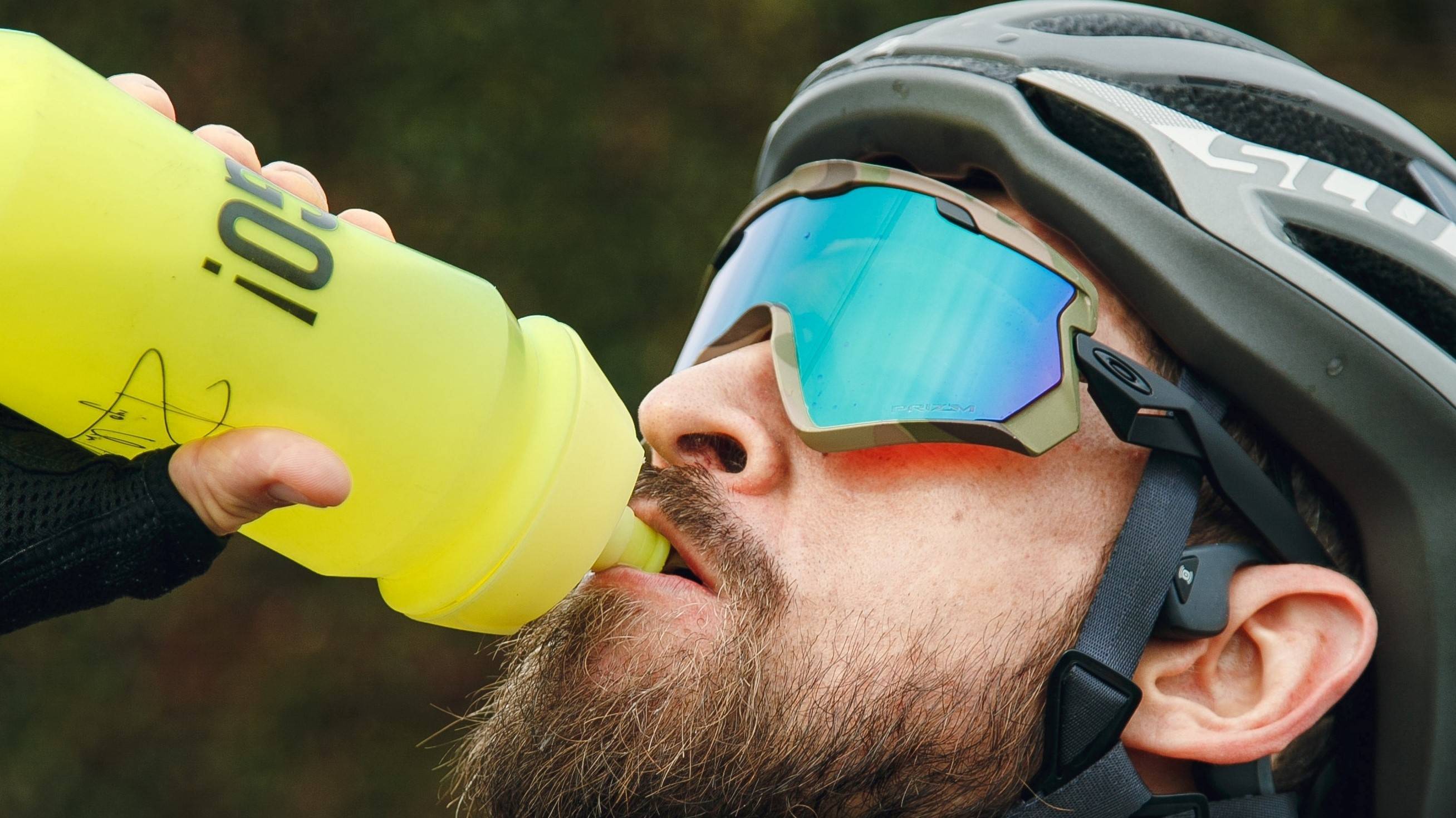Quite a few athletes struggle with stomach problems during competitions. Common cause: intolerance to competition nutrition. Sometimes a precise analysis of the tolerance and a coordination of the diet helps. Even mixed sports drinks have several advantages: they are individually tailored and inexpensive.
Only a few ingredients necessary
In our basic article on sports drinks, we have already described the three main functions of sports drinks in detail. From this it can be concluded that basically only a few ingredients are necessary for an optimal sports drink:
- Compensate for water loss: tap or mineral water (non-carbonated)
- Replace electrolytes: sodium (found in table salt or baking soda)
- Fill energy stores: short- and long-chain carbohydrates (maltodextrin and glucose)
Everyone has water and salt at home. An alternative to table salt is baking soda (sodium bicarbonate). 1 gram of baking soda contains approx. 300 mg of sodium and has the advantage that it does not taste so salty and can also serve as an acid buffer (lactate buffer) in the body.
Effective: maltodextrin
Maltodextrin is a carbohydrate that can provide particularly effective energy replacement. Maltodextrins are mono-, di-, oligo- and polymers of glucose (grape sugar). Maltodextrin is available in different compositions, which are designated with a degree of sweetness (DE) between 3 and 20. For comparison: the degree of sweetening of starch is given as DE 1 and that of glucose as DE 100. Common compositions of maltodextrin are DE6, DE12 and DE18/19. A higher degree of sweetening means a higher proportion of quickly available mono- and di-carbohydrates. Due to the numerous advantages, most manufacturers use maltodextrin as an energy source in their sports drinks.
Benefits of Maltodextrin:
- lower osmolarity than glucose for the same energy content
- good compatibility
- slower absorption leads to a small rise in blood sugar and insulin
- nevertheless effective and rapid absorption in the small intestine
- tasteless and little sweet
Depending on the composition, maltodextrins contain up to 10% short-chain carbohydrates. In order to be able to further increase the proportion for particularly short and intensive loads (e.g. sprint distance), pure glucose (dextrose) is required.
There are so many products on the market, why should I even mix my own sports drink?
-
If you mix it yourself, you know exactly what you are drinking.
In addition to the key substances (water, sodium and carbohydrates), most sports drinks on the market also contain numerous other substances such as minerals, vitamins, sweeteners, amino acids and flavorings in unmanageable quantities and compositions. The benefits and individual tolerability, especially under high physical stress, of numerous of these substances has hardly been researched. This could also be a reason for the widespread stomach and intestinal problems in triathlon. If you mix it yourself, you reduce the contents of your sports drink to the decisive substances and can therefore monitor exactly what you tolerate and what you don't or which substances optimally support your own performance. -
The energy supply can be precisely dosed and adjusted.
The energy content of self-mixed sports drinks can be adjusted to the respective competition requirements with little effort. It is obvious that the different distances in triathlon also have different energy requirements. In a sprint distance, for example, the energy supplied must be available very quickly, while in a long distance a slow and continuous supply of energy is crucial. With a self-mixed sports drink, everyone can create their own individual composition and constantly optimize it. -
Mixing it yourself is easy on the wallet.
Maltodextrin and glucose (dextrose) are available in pharmacies or can be bought online. Maltodextrin costs just under 10 euros per 1000g. Even less for larger purchase quantities. Compared to the sports drinks available on the market, a self-mixed sports drink is significantly cheaper and fulfills at least the same functions.
How do I mix my own sports drink?
Of course, mixing it yourself leaves a multitude of options open, because competition catering is a very individual matter. However, the basis for the optimal mixing ratio is the scientific principles from our introductory article. The overview below summarizes the optimal ranges again.
Optimum ranges for mixing a sports drink:
- The carbohydrate content should be between 4 and a maximum of 10% (i.e. 40-100g per liter) to enable optimal water absorption at the same time
- The osmolarity of the drink should be less than 270-290 mosmol per liter (hypotonic to maximum isotonic drink)
- The optimal sodium content is between 400 and 800 mg per liter of water




















